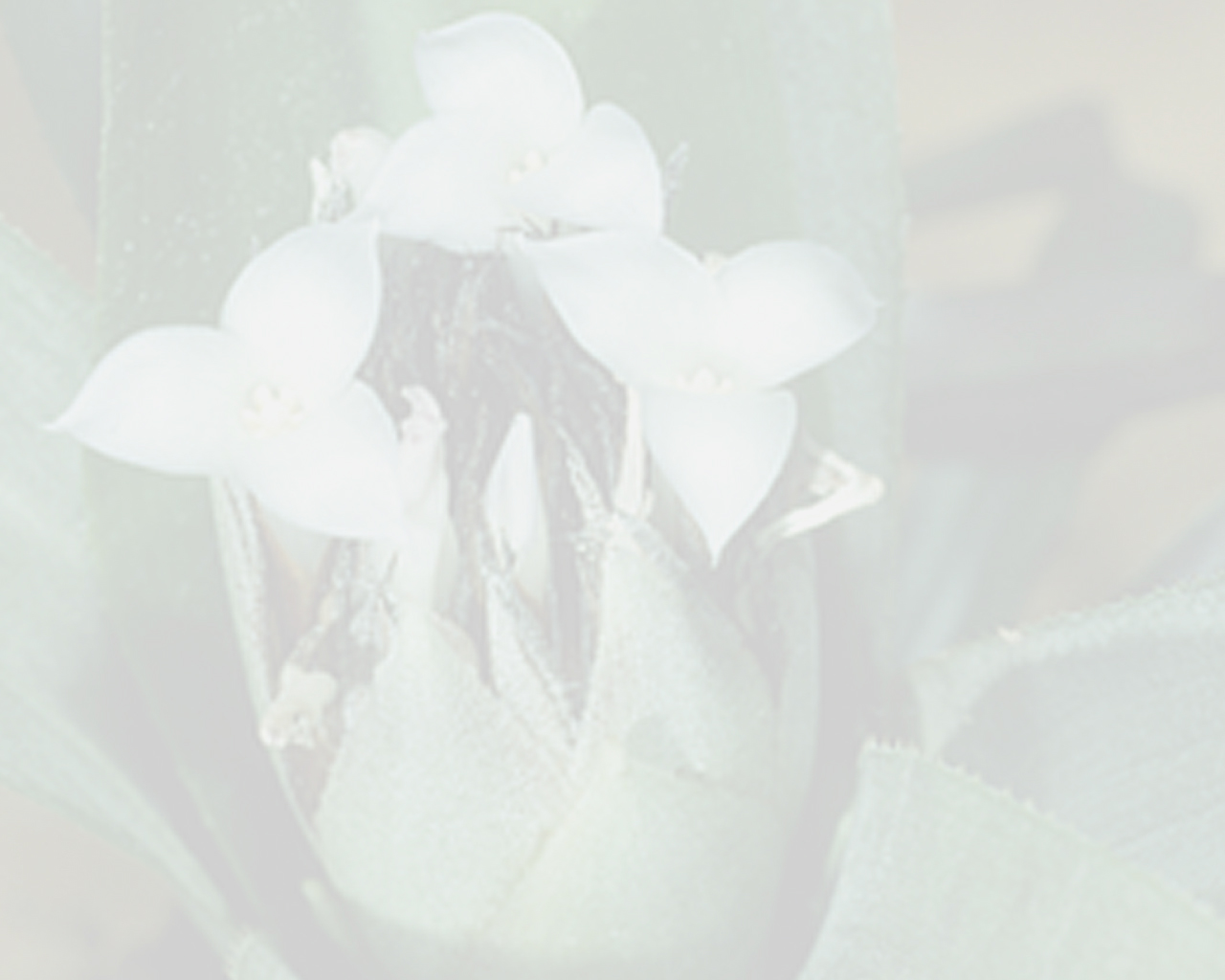

 Ronnbergia silvana Leme[as Ronnbergia silvana Leme]
Ronnbergia silvana Leme[as Ronnbergia silvana Leme]Diagnose: —Species nova a Ronnbergia neoregelioides Leme, affinis, sed inflorescentia elongata, foliis longioribus, basin versus leviter obtuse carinatis, bracteis scapalibus supernis haud involucratis, sepalis longioribus, petalis liberis, tubo epigyno 3-4 mm longo differt. Observations: —The general aspect of Ronnbergia silvana resembles R. carvalhoi, with similar leaf conformation in shape, size and color. In its habitat, the new species varies according to light availability, sometimes with longer and attenuate-caudate leaves prevailing, or with shorter, rounded and apiculate leaves. However, in floral details, it is more closely related to R. neoregelioides but differs from it mainly by the distinctly elongate inflorescence, the longer leaves usually obtusely carinate toward base, as well as by the upper scape bracts not involucrate, longer sepals, free petals, and by the epigynous tube ca. 3 mm long only.
The slightly elongate inflorescence of Ronnbergia silvana, which is distinctly longer than the leaf sheaths, as well as the presence of smaller bracts and subdensely arranged flowers, not concealing the rachis, suggests its somewhat intermediate taxonomical position between, on one side R. brasiliensis, and on the other side R. neoregelioides and R. carvalhoi.
Ronnbergia silvana also bears some resemblance to Aechmea canaliculata Leme & H. Luther. Even taking into consideration that its petals are known from fragments only, Leme & Luther (1998) highlighted in the protologue of A. canaliculata its morphological affinity with Ronnbergia brasiliensis, due to leaves and inflorescence structure, and the absence of a closer relationship with the already known species of Aechmea, unless it is with the complex of species containing A. lingulata, A. bicolor, and A. amorimii. However, R. silvana differs from A. canaliculata by leaf sheaths covered by subdensely pale colored minute trichomes (vs. densely brown trichomes slightly fused and forming a membrane), leaf blades not strongly canaliculate and the inner ones with apex to rounded and distinctly apiculate (vs. blades strongly canaliculate toward base and apex acuminatecaudate), scape shorter (13-17 cm vs. ca. 25 cm long), inflorescence slightly surpassing the leaf sheaths to slightly elevated above the rosette (vs. distinctly surpassing the leaf-sheaths and well elevated above the rosette), and sepals with a narrower lateral wing, white-lanate (vs. glabrous)
An identification key for the four Brazilian species of Ronnbergia is presented below.
Key to the Brazilian Ronnbergia
1. Inflorescence ca. 4 cm long, not distinctly elevated above the leaf-rosette, subcapitate or subellipsoid-capitate 2
1a. Inflorescence 5-10 cm long, distinctly elevated above the leaf-rosette, laxly to densely spicate . . . . . . . . . . . . . 3
2. Leaves 13-25 cm long, ecarinate; flowers ca. 6 in number; petals connate for ca. 4 mm, acute, lilac at apex
. R. neoregelioides
2a. Leaves 31-51 cm long, obtusely carinate toward base; flowers ca. 20 in number;
3. Flowers ca. 20 mm long, laxly arranged; petals ca. 14 mm long; ovary ca.4mm long R.brasiliensis
3a Flowers 28-36 mm long, densely arranged; petals 20-25 mm long; ovary 8-11 mm long. . . . . . . . . . . . . 4
4. Leaf sheaths with densely arranged trichomes slightly fused and forming a membrane; inner leaf blades acuminate-caudate; scape ca. 25 cm long; sepals glabrous . . . . . Aechmea canaliculata
4a. Leaf sheaths with trichomes subdensely arranged and not fused nor forming any membrane; inner leaf blades with apex to rounded and distinctly apiculate; scape 13 -17 cm long; sepals sparsely white-lanate . . . . . . R. silvana
Ronnbergia sikvana was found in a remaining Atlantic Forest at an altitude of 600-7--m, where it grows predominantly as an epiphyte on the lower parts of the tree trunks, forming small to large clumps together with Vriesea noblickii Martinelli & Leme and Vriesea aff. ruschii ssp.leonii Leme, to name few. Sometimes, it thrives on shaded rocks, side by side with other delicate bromelioids, like Nidularium longtflorum Ule and N. bicolor (E. Pereira) Leme, as well as a Neoregelia sp. closely related to N. kerryi Leme.Edited from (29-03-2017): Journ. Brom. Soc. 53(2) 62-65. (2003)